Kingdom Plantae Rank Species | Genus Lathyrus Higher classification Lathyrus | |
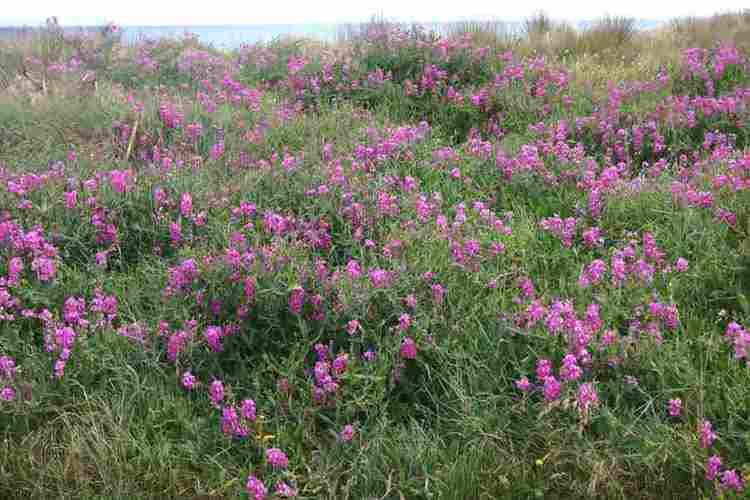 | ||
Similar Lathyrus, Legumes, Lathyrus pratensis, Lathyrus sylvestris, Lathyrus vernus | ||
Bjtv vol 3 japanese summer sweet peas lathyrus latifolius
Lathyrus latifolius, the perennial peavine, perennial pea, broad-leaved everlasting-pea, or just everlasting pea, is a robust, sprawling perennial in the Pea Family Fabaceae. It is native to Europe but is present on other continents, such as North America and Australia, where it is most often seen along roadsides.
Contents
- Bjtv vol 3 japanese summer sweet peas lathyrus latifolius
- Everlasting sweet pea sweetpea lathyrus latifolius perennial flower seeds on www myseeds co
- Morphology
- Racemes
- Seeds
- Reproduction
- Cultivation and habits
- Relations to insect life
- References
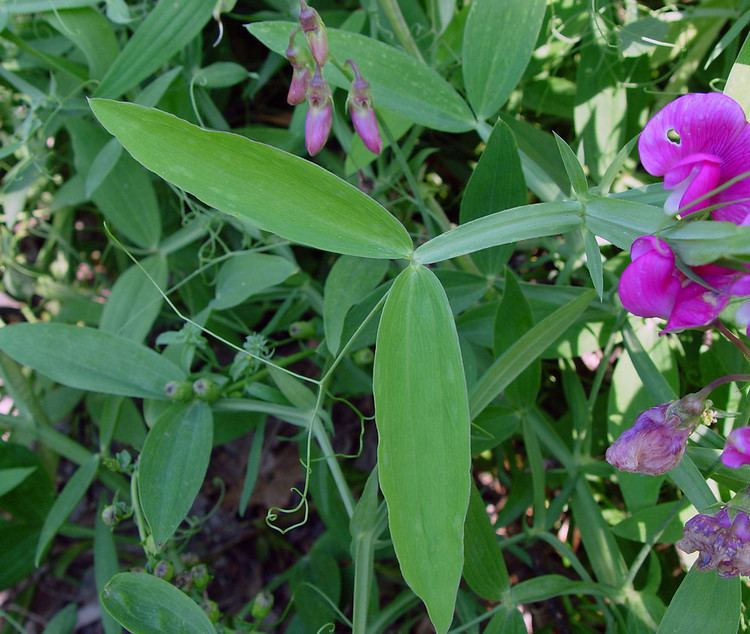
Everlasting sweet pea sweetpea lathyrus latifolius perennial flower seeds on www myseeds co
Morphology
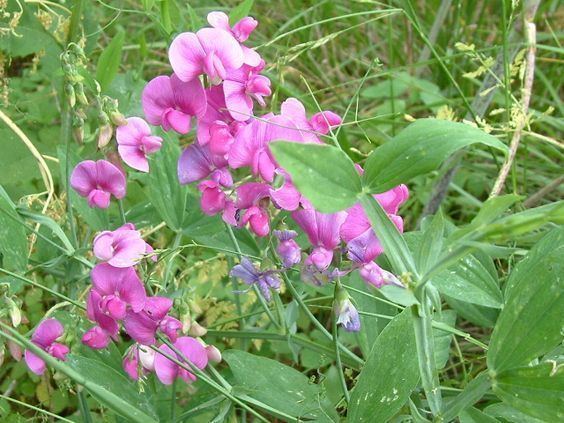
Lathyrus latifolius has winged hairless stems, and alternating blue green compound leaves consisting of a single pair of leaflets and a winged petiole about 2" long. The leaflets are narrowly ovate or oblong-ovate, smooth along the margins, hairless and up to 3" long and 1" across. There is a branched tendrils between the leaflets.
Racemes
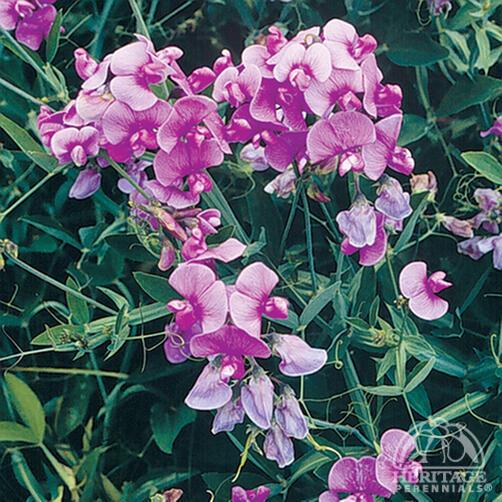
Short racemes of 4–11 flowers are produced from the axils of the leaves. The flowers, which are unscented, are about ¾–1" across with a typical structure for Faboideae, with an upper standard and lower keel, enclosed by lateral petals. There are 5 petals, which are purplish pink, fading with age. There is a green calyx with 5 teeth, often unequal. The blooming period lasts about 2 months during the summer and early autumn.
Seeds
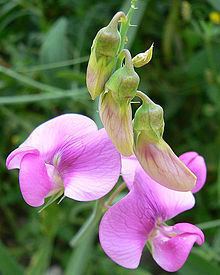
The flowers are replaced by hairless flattened seedpods, about 2" long and ½" wide, with several seeds inside. The seedpod, which is initially green, gradually turns brown, splitting open into curled segments, flinging out the seeds. The seeds are dark and oblong to reniform in shape.
Reproduction
Lathyrus latifolius can reproduce vegetatively from its taproot and rhizomes, or by reseeding.
Cultivation and habits
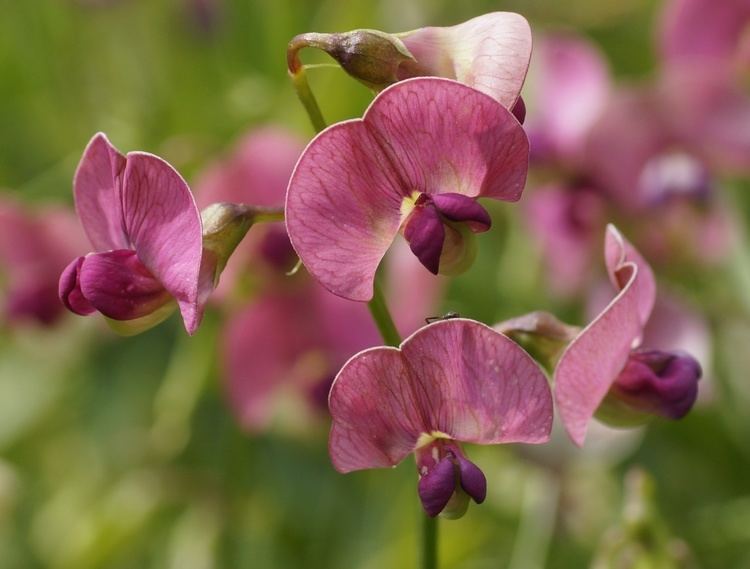
Lathyrus latifolius is a perennial herbaceous vine (climber), which can reach 6 feet or more by means of twining tendrils, but in open areas sprawls. It is frost-hardy, long-lived, and slowly spreading. The foliage becomes rather ragged and yellowish by the end of summer.
It requires partial to full sun, and loam or clay-loam soil that is moist, mesic, or slightly dry. Unlike the related annual sweet pea, Lathyrus odoratus, with which it may be confused, it has no scent. While grown as a garden plant it may be pervasive and difficult to remove. Because of this, this species is often considered to be a weed despite its attractive appearance.
Numerous cultivars have been selected as garden subjects, of which the following have gained the Royal Horticultural Society's Award of Garden Merit:
Relations to insect life
Bumblebees pollinate the flowers. Butterflies visit the flowers for their nectar, but do not pollinate. Epicauta fabricii (Fabricius blister beetle), the caterpillars of Grammia oithona (Oithona tiger moth) and some herbivores feed on the leaves. However the seeds are poisonous.
